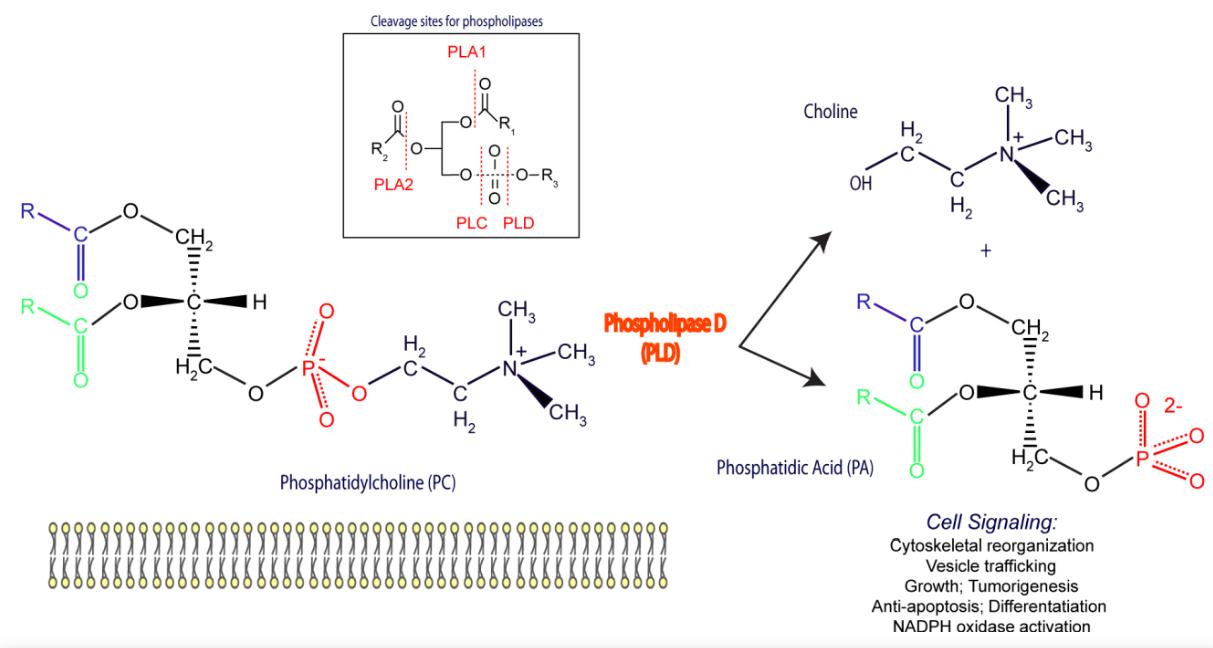A New Method for Detecting Phospholipase D Activity
Phospholipase (PL) catalyzes the hydrolysis of phospholipids on cell membranes. According to the hydrolysis moiety, phospholipases are divided into phospholipase A1, A2, C, and phospholipase D (PLD). Phospholipase D is a phosphatidylcholine hydrolase, which is an enzyme that catalyzes the hydrolysis of lecithin (PC) to produce choline and phosphatidic acid (PA). Phospholipase D plays a vital role in intracellular signal transduction, mitosis in fibroblasts, increasing intracellular calcium concentration, and activating specific protein kinases and phospholipases. And its metabolites are involved in many physiological and biochemical processes such as regulating cellular lipid metabolism, signal transduction, and resistance to stress in biofilm formation.

Phosphate (PA) acts as a pleiotropic lipid second messenger that affects intracellular signaling, including vesicle trafficking, modification of the actin cytoskeleton, and activation of protein kinases. However, how lipid signaling leads to diverse physiological and pathological signaling outcomes remains unknown, mainly due to the lack of suitable tools to visualize its generation's spatial and temporal dynamics within cells.
Recently, researchers developed a new platform for detecting the Phospholipase D enzyme; this chemical method could image phosphatidic acid synthesis by PLD enzymes in live cells. This platform could provide a universal and unbiased imaging strategy to identify and track discrete pools of PLD-generated PA within live cells. Using this platform, imaging of subcellular compartments with PLD activity within living cells could be brought out without significantly perturbing endogenous PA levels and revealing unexpected localizations for PLD-mediated production of PA.
The Advantages of this platform include:
- No toxicity to cells
- Rapid detection of enzyme activity
- Results are visualized
Potential Applications
- Detection of Phospholipase D activity
- Detection of PA production
- Optimizing biomarkers for human inflammatory diseases
- Provide a new method for immunotherapy
Profacgen is a company dedicated to research in the biological field. We have been committed to discovering advanced experimental techniques to provide stronger support for our customers' research. Please do not hesitate to contact us for more details if you are interested in this new method, and we will provide a considerate service for you. At the same time, we also provide other protein interaction detection methods, please move to our website for more details in protein-protein interaction.
Reference
- Gomez-Cambronero, Julian. "New Concepts in Phospholipase D Signaling in Inflammation and Cancer." The Scientific World Journal 10 (2010): 1356 - 1369.
Fill out this form and one of our experts will respond to you within one business day.